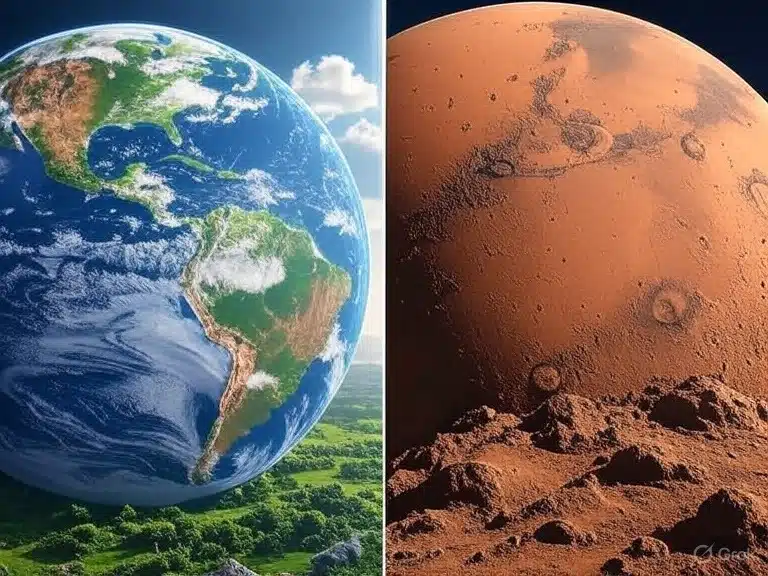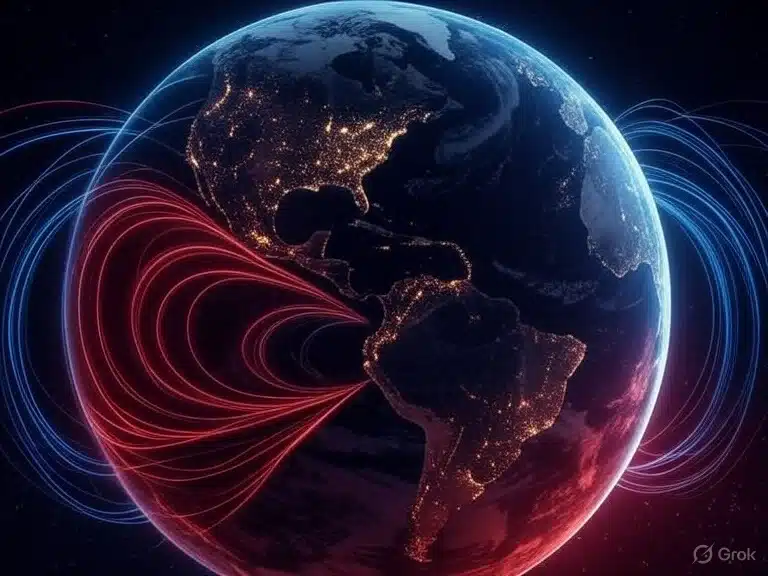Earth’s magnetic field is like an invisible shield that protects our planet from deadly cosmic radiation and charged particles streaming from the Sun. Without it, life on Earth would look very different—if it could survive at all. But what if, one day, Earth’s magnetic field collapsed completely? Scientists have long debated this terrifying scenario, and while the planet has experienced temporary weakening and reversals in the past, a full collapse would set off a chain reaction of catastrophic consequences.
The Role of the Magnetic Field
Earth’s magnetic field is generated by the movement of molten iron in the planet’s outer core, creating a powerful dynamo effect. This invisible shield:
- Deflects harmful solar wind and cosmic rays
- Guides compasses and navigation systems
- Protects the atmosphere from erosion
Without it, Earth would be exposed to a hostile space environment.

A Direct Hit from Solar Radiation
If Earth lost its magnetic field overnight, the first and most immediate threat would come from the Sun. Solar flares and coronal mass ejections—massive bursts of charged particles—would strike the atmosphere directly.
Consequences would include:
- Global power grid failures as solar storms overload transformers.
- Satellite destruction from unfiltered cosmic radiation.
- Communication blackouts affecting navigation, aviation, and internet connectivity.
Essentially, our modern technological infrastructure would collapse within hours of a strong solar storm.

The Atmosphere Under Attack
Over millions of years, without a magnetic field, Earth’s atmosphere would be stripped away by solar wind. This is exactly what scientists believe happened to Mars billions of years ago.
- Oxygen depletion would make breathing impossible.
- Increased radiation exposure would raise cancer risks dramatically.
- Loss of water as particles in the solar wind break apart molecules.
Earth would slowly transform from a blue planet into a barren desert world, eerily resembling Mars.

Life on the Ground
If the collapse happened suddenly, humans would still survive for some time, but our biology is not designed to endure unfiltered radiation.
- Skin cancers and mutations would skyrocket.
- Crop damage from UV radiation would devastate food supplies.
- Marine life disruption as plankton—the foundation of the ocean food chain—dies under radiation bombardment.
Eventually, survival would depend on living underground, beneath oceans, or under specially shielded domes.

Technology to the Rescue?
Could we build an artificial magnetic field to protect Earth? Scientists at NASA and ESA have floated the idea of a giant magnetic shield at the Lagrange Point (L1)—a location between the Earth and Sun where gravitational forces balance.
This artificial magnet could deflect solar wind, buying humanity time to adapt. However:
- The scale would be unprecedented, requiring enormous energy.
- Maintenance and global cooperation would be essential.
- Failure of such a shield would instantly expose Earth again.

Lessons from Earth’s History
Interestingly, Earth’s magnetic field has weakened and reversed many times in history. These reversals, called geomagnetic reversals, do not collapse the field entirely but cause temporary instability.
- The last reversal happened about 780,000 years ago.
- During reversals, the field weakens by up to 90%, leaving the planet partially exposed.
- Life on Earth survived—but humans weren’t around to rely on satellites and modern tech.
This history shows that Earth’s magnetic field may fluctuate but has never fully disappeared in billions of years.

Could Humanity Survive?
In the long run, if Earth’s magnetic field collapsed completely, survival would depend on technology, adaptation, and migration.
- Underground and underwater habitats would become essential.
- Genetic engineering might help humans tolerate higher radiation.
- Space colonization—on the Moon, Mars, or artificial stations—could become our only hope.
Still, the Earth we know today, full of oceans, forests, and thriving ecosystems, would be gone.

Conclusion
The collapse of Earth’s magnetic field would be one of the most catastrophic events in planetary history. From the loss of atmosphere to radiation storms and ecological collapse, life would struggle to survive. While temporary weakening is part of Earth’s natural cycle, a permanent disappearance would leave humanity fighting for survival underground—or among the stars.
The magnetic field may be invisible, but without it, Earth would never be the same.

